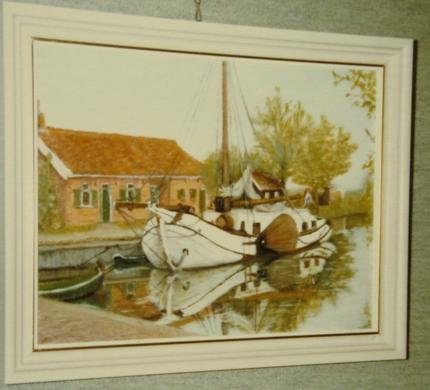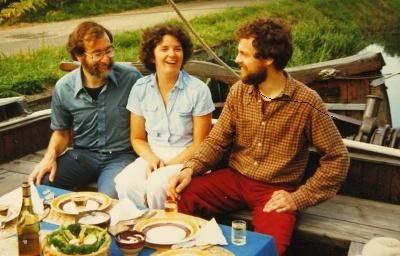Stories
The brain mechanisms of aggression
International Society for Research on Aggression
Behavior Genetics Association Ethics Committee
The World Wide
Runners Club
for Peace
United Nations University for Peace
* * *
Needing a change of scene after the break-up of my marriage, I arranged for a months work in Holland in the laboratory of Jaap Koolhaas who was also doing brain research on the mechanisms of aggressive behavior in rats.
Since I was developing a neuro-ethological model of these brain mechanisms, I had hoped for a good dialogue with Jaap and his colleagues in Holland. In that respect I was disappointed, as they did not take my theoretical work seriously. In other respects, however, the trip was very rewarding.
Jaap and I set out to do some very interesting experiments. The design was very simple, to deprive rats that were experienced fighters of their sensory systems, allowing them only olfaction, so that they could smell another rat but could not locate it. Vision was easy; we tested them in darkness and watched with infrared glasses. Sound was not difficult as we plugged the rats' ears with wax. Touch was more complicated. We tried cutting nerves to the vibrissae, but eventually found it easier to give the rats injections of novocaine in the cheeks to deaden their ability to feel the other animal. What happened was astonishing. The sensory-deprived male rat, knowing from its smell that another male rat had entered its territory, but unable to locate it, began to leap in the air and land biting and kicking as if it were on top of the other animal. In other words, it "hallucinated" its opponent. This could have been a very important publication and theoretical breakthrough on the way the motivational mechanism influences sensory systems, but we couldn't publish it. There was a serious ethical problem. Because the attack was not consummated, i.e. the rat had not actually attacked its opponent, the rat continued attacking the "thin air" and went into convulsive seizures. In other words, the brain did not receive the feedback necessary to turn off the attack, and kept giving the instructions and increasing their intensity to the point of seizures. Hence, we could not continue the experiments. for a few weeks and we have a wonderful album of photos from that time.

A painting of our tjalk at an expo in town hall
Jaap and his colleagues had found me a place to live on a tjalk, an old sailing cargo ship that was moored in a small canal next to a medieval church in the tiny village of Nordlaren. Lindsay came over and lived with me on the houseboat for a few weeks and we have a wonderful album of photos from that time.

With Dirk on the tjalk
Living, even for a brief time, in Holland, was an unforgettable adventure. Take, for example, their system of transportion. You left home in the morning on your bicycle, taking the "fietspad" or dedicated bike route separate from the highway on your way to work, perhaps 5 miles away. At the Institute there were hundreds of bicycles and only a few automobiles as most other workers did the same. To go to another city in Holland, we would ride to the station, lock our bikes in the abundant bike racks, take a train (they left in any direction at least once per hour), make a change or two (easy) and arrive at any other city in good time. Once there, we would rent a bike at the station for a very small sum, go to your destination, and returning, take the train, and eventually our bikes to go home. I recall often riding through the countryside returning at night, even after midnight, with the light on our bicycles showing the way.
My colleagues, Jaap and Dirk, were into sailing boats and preserving windmills. Jaap, in fact, was building his own boat in the garage out back, bending the wood and fitting it precisely. And Dirk had outfitted an old sailing boat called a "pluut" in which we sailed out to Schiermonnikoog in the Frisian Islands (try to pronounce it!!).
One of the things that I retain from that time is an abiding passion for very aged gouda cheese!
 |
Stages
1986-1992
Fall of Soviet Empire
1992-1997
UNESCO Culture of Peace Programme